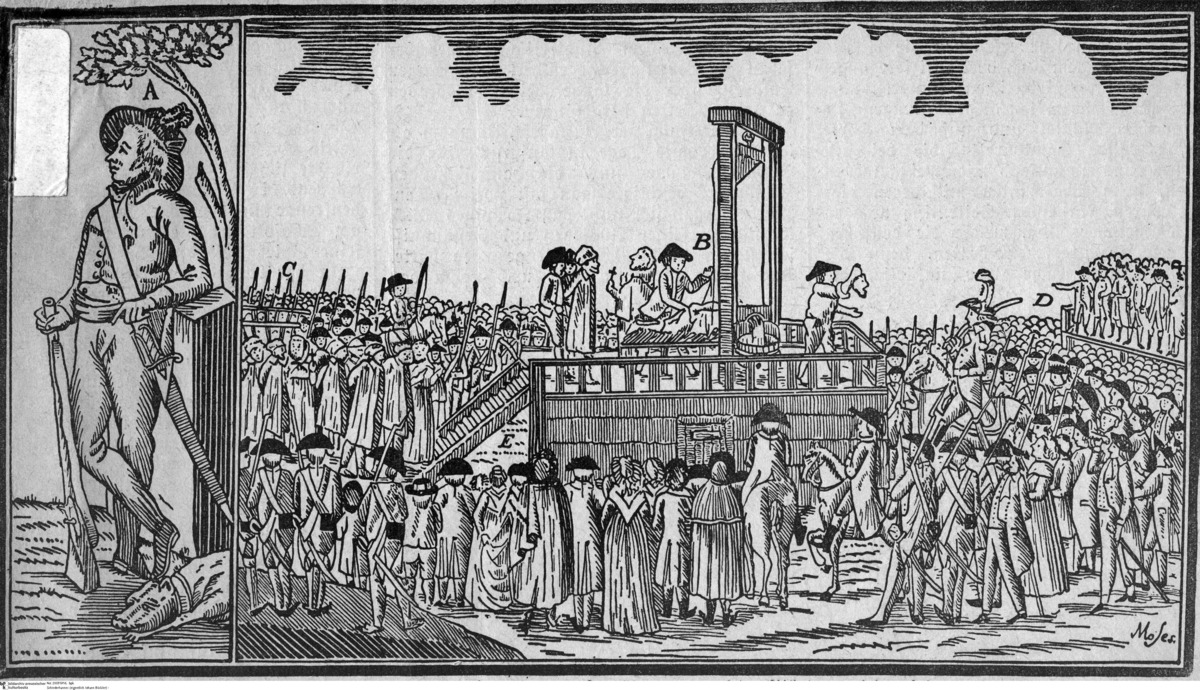Abstract
This engraving consists of a sequence of scenes ending in the
execution of “Schinderhannes” or “Hans the Skinner.” First,
Schinderhannes is shown as a highwayman, with rifle and sword at the
ready (left, A). Next, he appears on the scaffolding of a guillotine,
listening as a priest administers last rites (middle, B). Finally, his
severed head is presented to throngs of onlookers (right, C, D). He was
killed by guillotine, a device that had come to symbolize the French
Revolution but was still unknown in German lands at that time. As this
engraving suggests, public executions were theatrical events. Political
authorities carried out executions but were by no means the sole, or
even primary, determinants of their meaning. Rather, it was the common
people who imbued these events with folk mysticism and lent meaning to
them through interpretation.
